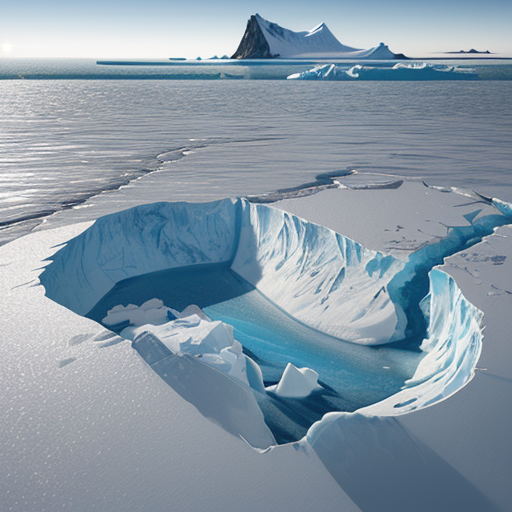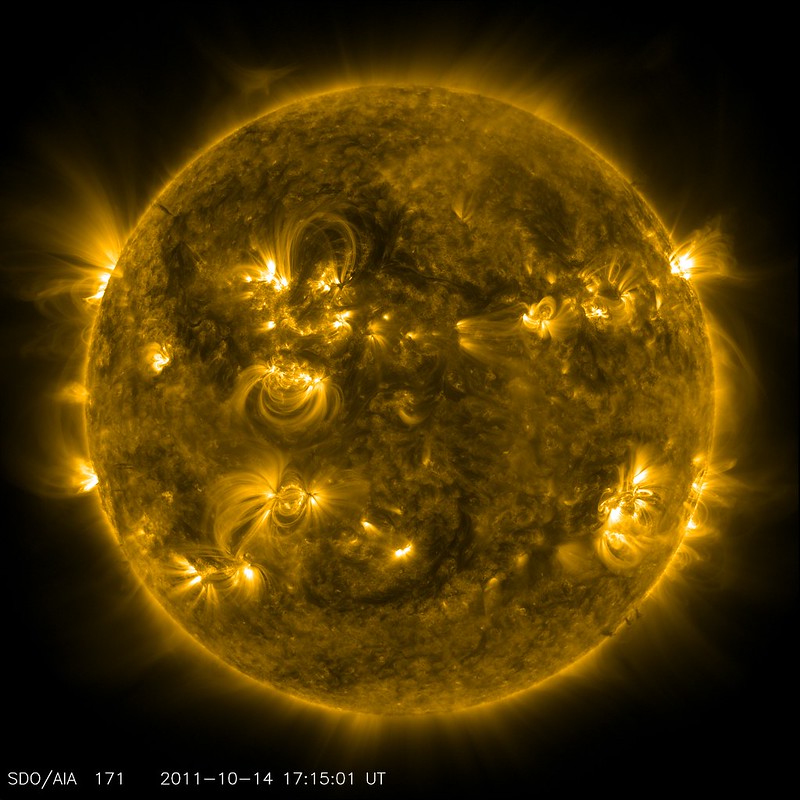The Antarctic ice sheet, which holds about 60% of the world’s freshwater, is melting at an alarming rate. Recent studies indicate that this ice loss is happening much faster than previously expected, raising concerns about its far-reaching effects on global sea levels and oceanic currents. The accelerated melting is driven by a combination of warming ocean temperatures, atmospheric changes, and even alterations in the ozone layer over the continent. This article delves into the factors behind the accelerated ice melt, the impact on oceanic circulation systems, and the potential consequences for coastal regions around the world.
Accelerated Ice Loss: What’s Driving It?
Antarctica has always been a critical region in Earth’s climate system, but changes in global temperatures are causing the ice sheet to lose mass at an unprecedented rate. Between 1992 and 2017, Antarctica lost nearly 3 trillion metric tons of ice, contributing significantly to global sea-level rise. However, recent data show that this rate has nearly tripled in the last decade, a worrisome trend that suggests the worst is yet to come.
Key Factors Contributing to Accelerated Melting:
Rising Ocean Temperatures:The
Southern Ocean surrounding Antarctica is warming faster than other
oceans, leading to increased melting of ice shelves. These floating ice
sheets act as buttresses that slow the flow of glaciers into the ocean.
As they weaken and collapse, glaciers flow more rapidly into the sea,
contributing to rising sea levels.Atmospheric Warming:Rising
global temperatures are also affecting Antarctica’s surface ice,
particularly in West Antarctica, which has experienced some of the
fastest warming on the planet. While East Antarctica remains relatively
stable, even slight increases in temperature can destabilize the massive
glaciers in this region.Changes in Wind Patterns:Alterations
in wind patterns around the Southern Hemisphere, exacerbated by climate
change and ozone depletion, are pushing warmer waters toward
Antarctica’s coastlines. This further accelerates the melting of ice
shelves from below, leading to a feedback loop of ice loss.Ice Shelf Collapse:In
recent years, several Antarctic ice shelves have collapsed, most
notably the Larsen B Ice Shelf in 2002. The disintegration of these ice
shelves removes the natural barriers holding back glaciers, which then
slide more quickly into the sea, directly contributing to sea-level
rise.
Consequences for Global Sea Levels
The melting of Antarctica is one of the most significant contributors to global sea-level rise. Current estimates suggest that if all of Antarctica’s ice were to melt, global sea levels would rise by about 58 meters (190 feet). While this is unlikely to happen in the near future, even a small percentage of that melt would have catastrophic consequences.
Immediate Impacts:
Rising Coastal Flooding:For
every centimeter of sea-level rise, millions of people living in
low-lying coastal areas are at greater risk of flooding. Countries like
Bangladesh, island nations like the Maldives, and major cities such as
New York, Miami, and Jakarta are already experiencing the effects of
higher seas. With the Antarctic ice melt accelerating, these risks will
only grow.Increased Storm Surges:Higher
sea levels amplify the effects of storms and hurricanes. Coastal areas,
particularly those vulnerable to tropical storms, will experience more
devastating storm surges, displacing millions of people and causing
billions of dollars in damage.Loss of Coastal Ecosystems:Rising
seas threaten delicate coastal ecosystems such as wetlands, mangroves,
and coral reefs. These ecosystems provide critical habitats for marine
species, act as natural storm barriers, and support local economies.
Their loss will have profound ecological and economic impacts.
Disruption of Oceanic Currents
One
of the most significant yet less-discussed consequences of Antarctic
melting is its impact on global oceanic currents. Oceanic currents,
driven by differences in temperature and salinity, act as Earth’s
climate regulators, distributing heat from the equator to the poles and
influencing weather patterns globally. Antarctica’s rapid ice melt is
disrupting this balance.
Key Ocean Currents at Risk:
Antarctic Bottom Water (AABW):Antarctic
Bottom Water is a cold, dense water mass that forms when sea ice forms,
leaving behind very salty water that sinks and spreads across the ocean
floor. This process plays a crucial role in driving the global conveyor
belt of oceanic circulation, which regulates Earth’s climate. As
Antarctic ice melts and freshwater enters the Southern Ocean, the
formation of AABW is disrupted, potentially slowing down the global
circulation system.The Atlantic Meridional Overturning Circulation (AMOC):The
AMOC, which includes the Gulf Stream, is one of the world’s most
important oceanic circulation systems. It transports warm water from the
tropics to the North Atlantic, playing a critical role in moderating
climates, particularly in Western Europe. Freshwater from the Antarctic
melt could disrupt this system by reducing salinity, making the waters
less dense and thus slowing the sinking of cold, dense water that drives
the AMOC. A slowdown in the AMOC could lead to more extreme weather
patterns in Europe, such as harsher winters, as well as disruptions to
marine ecosystems.Changes in Upwelling Systems:Upwelling
systems, where nutrient-rich deep waters rise to the surface, are vital
for marine life and fisheries. These systems depend on stable ocean
currents. As the influx of freshwater from Antarctica dilutes ocean
salinity, it could affect upwelling regions and disrupt marine
ecosystems that rely on these nutrient flows.
The Long-Term Climate Implications
The
changes to oceanic currents and the rapid rise in sea levels due to
Antarctica’s melting ice will have far-reaching consequences, many of
which we are only beginning to understand. Slower oceanic circulation
could result in more extreme weather events, disrupt global food
systems, and lead to a cascade of climate feedback loops that accelerate
global warming.
Potential Consequences:
Disrupted Weather Patterns:The
slowdown of major oceanic currents could drastically alter global
weather patterns. For example, the weakening of the AMOC might result in
colder winters in Europe while simultaneously causing droughts in other
parts of the world. It could also increase the frequency and intensity
of storms in the North Atlantic.Ocean Ecosystem Collapse:Many
marine species depend on stable ocean temperatures and nutrient flows
to survive. Changes in ocean circulation could lead to the collapse of
marine ecosystems, with cascading effects on biodiversity, fisheries,
and food security. Coral reefs, already under stress from ocean
acidification and warming, could be pushed beyond the tipping point.Feedback Loops:As
Antarctic ice melts, it exposes darker ocean water, which absorbs more
sunlight than reflective ice. This accelerates ocean warming, further
melting ice and raising sea levels—a feedback loop that could speed up
climate change. Similarly, changes in ocean circulation could alter
carbon dioxide uptake by the ocean, reducing the planet’s ability to
absorb greenhouse gases and accelerating atmospheric warming.
Conclusion: A Global Emergency
The
accelerated melting of Antarctica’s ice is a global emergency with
profound implications for the world’s oceans and coastlines. The
immediate impacts of rising sea levels, combined with the
destabilization of vital oceanic currents, threaten to exacerbate
climate change and disrupt ecosystems and economies alike.
Addressing
this crisis will require urgent international cooperation to mitigate
the effects of global warming, reduce greenhouse gas emissions, and
develop adaptive strategies for the millions of people living in
vulnerable coastal areas. While Antarctica may seem distant from daily
life, its ice sheets hold the key to the future stability of Earth’s
climate system. What happens in Antarctica will ultimately affect
everyone.







Leave a Reply